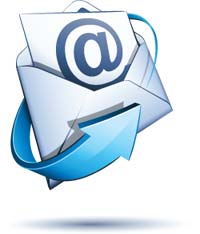 When a firm decides its marketing strategies, email is often forgotten, but important channel a company can use to promote itself. Email marketing has proven to be one of the most vital parts of a marketing campaign for small businesses, as well as individual efforts.
When a firm decides its marketing strategies, email is often forgotten, but important channel a company can use to promote itself. Email marketing has proven to be one of the most vital parts of a marketing campaign for small businesses, as well as individual efforts.
Some companies will offer a subscription to their newsletter as a part of their website’s registration process. The average individual fills out so many of these forms that they forget which newsletters they actually signed up for, and ineffective newsletters get designated as spam and filtered right to the trash. Therefore, it is important to provide relevant and interesting information in each and every newsletter mailed, lest you take the risk of permanently losing subscribers.
Don’t forget the importance of formulating an attention-grabbing subject line as a part of getting past the user’s delete key!
The advantage the email newsletter has over its other Internet counterparts is that it requires the least action on the subscribers’ part. Email newsletters go straight into your inbox and don’t require that you (on your own accord) go visit an external website or blog. If you manage to provide a regular, quality newsletter, you will have a much more “personal” relationship with your subscribers through email than you would through other marketing channels.
Let’s give an example: both Bob and Tom are selling brand new products; Bob has 1000 RSS subscribers and Tom has 1000 e-mail newsletter subscribers. I don’t know about you, but most people are much pickier about what comes into their inbox than what they see on an RSS feed. That’s because most people at least open all of their emails, but they don’t always read their RSS feed right away. Tom has a more solid subscriber base and therefore reaches more potential buyers than Bob.
There are no limits to what can be promoted in your email marketing campaigns. You can effectively maintain relationships with your subscribers, keep them up to date regarding goings-on in your company, promote new products, and more. Basically, if you can send it in an email, you can put it in your newsletter.
Maintain a reputable quality in your email newsletters, and you can let email marketing do the rest of the work for you.






